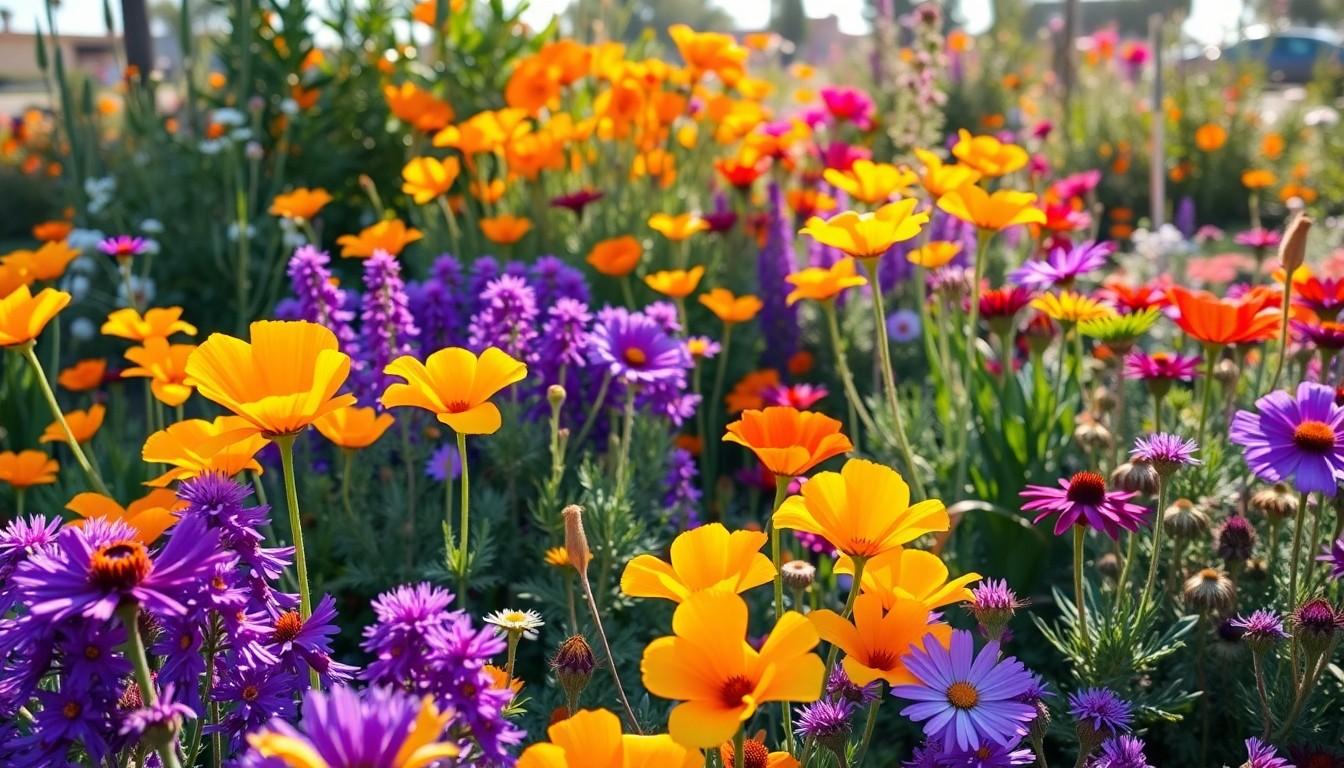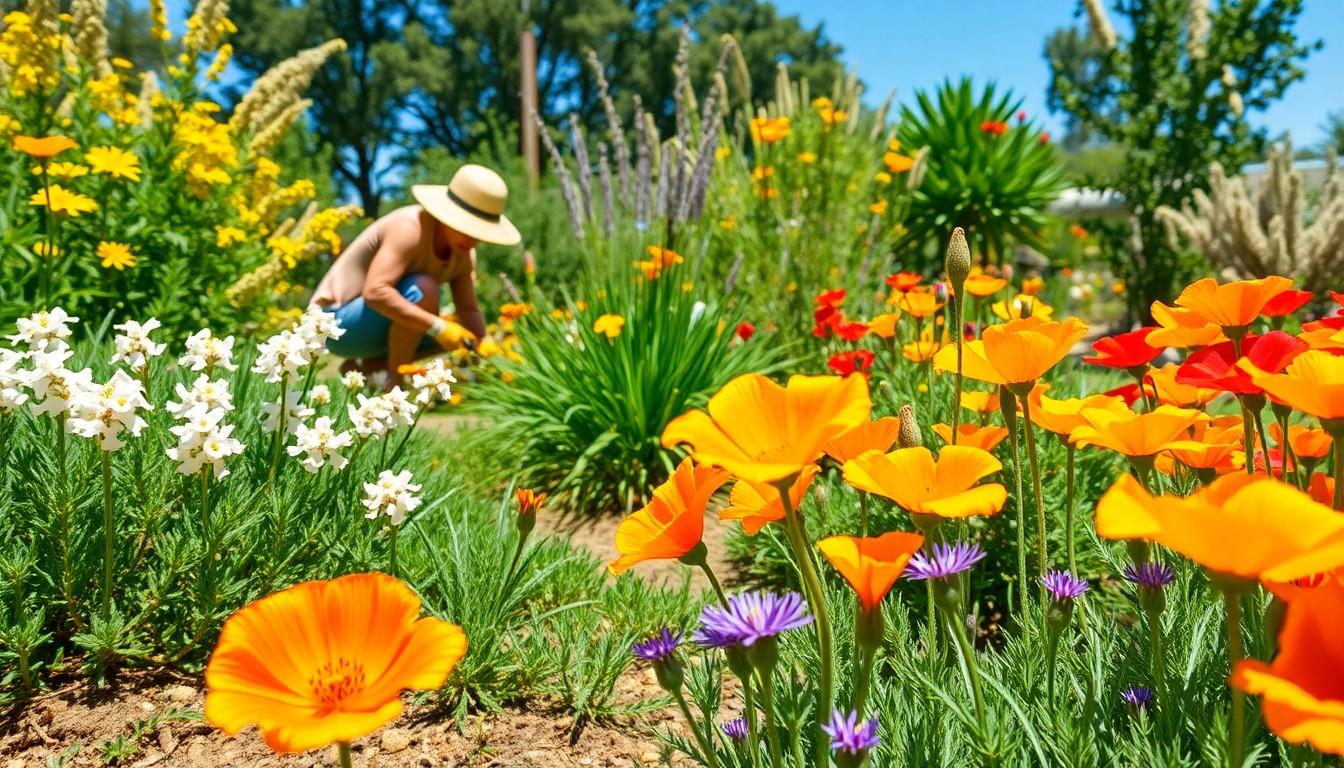In sunny San Diego, where the surf meets the turf, native plants are the unsung heroes of the landscape. They’re like the cool kids at school—low maintenance, drought-tolerant, and always in style. These local flora not only add beauty to gardens but also provide essential habitats for wildlife. Who wouldn’t want to be the neighbor with a garden that’s both eco-friendly and a magnet for butterflies?
Embracing native plants isn’t just a trendy choice; it’s a smart one. They thrive in the local climate, saving water and reducing the need for chemical fertilizers. Plus, with a little planning, a native garden can be a riot of color and texture, turning any yard into a vibrant oasis. So why not dive into the world of native plants and discover how they can transform your outdoor space into a San Diego paradise?
Overview of Native Plants in San Diego
Native plants in San Diego showcase a rich diversity that contributes to the region’s unique ecosystem. Characteristics of these plants include drought tolerance and low maintenance, which align well with the climate’s dry summers and mild winters. Many of these species thrive without the need for extensive watering or chemical fertilizers, promoting sustainable gardening practices.
Among the native flora, various species stand out. California poppy, the state flower, adds vibrant pops of orange, while coastal sagebrush offers a fragrant landscape and vital habitat for local wildlife. Additionally, manzanita provides striking visuals with its smooth red bark and evergreen leaves.
Ecological importance defines these plants as well. They play critical roles in supporting pollinators like bees and butterflies, fostering biodiversity. Wildlife benefits from their presence, as native plants offer food sources and shelter.
Understanding the benefits of planting native species contributes to healthier gardens and environments. Water conservation becomes more effective, resulting in lower utility bills over time. Moreover, local pests and diseases are less of a concern with native plants, as they are naturally adapted to their surroundings.
Transforming gardens with native plants fosters a harmonious relationship with nature. Choices in landscaping not only create visually appealing spaces but also encourage local ecosystems to thrive. Embracing native plants leads to sustainable practices that benefit both residents and the environment.
Benefits of Using Native Plants

Native plants provide numerous advantages for gardens in San Diego. Their adaptability to local environmental conditions promotes sustainability throughout the region.
Ecological Advantages
Ecological benefits stand out when using native plants. They require less water, reducing strain on local water resources. Native species support local wildlife, providing essential habitats for many birds, butterflies, and insects. Pollinators thrive in these environments, boosting plant reproduction and ensuring the health of ecosystems. Additionally, using native plants lessens the need for chemical pesticides, promoting a healthier and safer gardening approach. Species like California sagebrush and purple nightshade enhance soil quality while preserving biodiversity. Planting natives ultimately creates a thriving ecosystem that supports both flora and fauna.
Aesthetic Appeal
Aesthetic value significantly increases with the inclusion of native plants. Vibrant flowers and diverse textures draw the eye, enriching garden landscapes. They create a sense of place, reflecting the natural beauty of San Diego. Landscape design benefits from the seasonal blooms of native species, creating visual interest year-round. California poppies and monkey flowers add splashes of color, enhancing outdoor spaces. Native plants also require less upkeep, allowing for a beautiful garden without excessive maintenance. By prioritizing native species, homeowners cultivate inviting, visually pleasing environments that celebrate local natural heritage.
Popular Native Plants in San Diego
San Diego’s native plant palette features an array of species that thrive in the local climate and support biodiversity.
Coastal Sagebrush
Coastal sagebrush provides essential habitat for birds and insects. This drought-tolerant shrub features fragrant gray-green foliage. It flourishes in sandy areas and offers stunning yellow flowers in spring. Coastal sagebrush contributes to soil stabilization, reducing erosion. Gardeners appreciate its low maintenance needs and adaptability.
California Lilac
California lilac stands out with its vibrant blue to purple flowers. This shrub attracts pollinators, making it a favorite among gardeners. It thrives in sunny, well-drained areas and is highly drought-tolerant. Its dense foliage creates a lush backdrop for other plants. Additionally, California lilac provides essential cover for wildlife, enhancing local ecosystems.
Best Practices for Planting and Maintaining Native Plants
Planting native plants in San Diego requires attention to specific techniques to ensure their success. Careful planning and proper maintenance lead to thriving, sustainable gardens.
Site Preparation
Choosing the right location is essential for native plants. Sun exposure and soil type significantly impact growth. Clear the area of invasive weeds that compete for resources. Additionally, amend the soil with organic matter to enhance fertility and drainage. Create a slight depression for planting to encourage water retention. Testing soil pH can provide insights into necessary adjustments. Finally, consider grouping plants with similar water and sunlight needs to promote healthy ecosystems.
Watering Guidelines
Watering native plants demands a thoughtful approach. Initial watering after planting support root establishment. Following this, use deep, infrequent watering to encourage drought tolerance. Monitor the top inch of soil; when it feels dry, it’s time to water. This method prevents overwatering, which can harm plant health. During hot summer months, adjust watering schedules to account for increased evaporation. Observe local rainfall patterns, and adjust watering accordingly, since excessive reliance on supplemental water can hinder the acclimatization of these plants.
Resources for Learning About Native Plants
Numerous resources exist for learning about native plants in San Diego. Local organizations provide extensive information, including the San Diego Native Plant Society, which offers native plant sales and educational events. They also host workshops that teach propagation techniques and plant identification.
Books on native gardening prove beneficial as well. “California Native Plants for the Garden” by Carol Bornstein, David Fross, and Bart O’Brien serves as a comprehensive guide. This text details various species, including growing requirements and landscape uses.
Online platforms offer rich educational content. Websites such as Calscape.org provide searchable databases of native plants based on geographical area. Users can easily find detailed descriptions and ecological roles of native species.
Additionally, local nurseries specialize in native plants. These nurseries not only sell plants but also offer expert advice on care and maintenance. A visit to these stores can provide firsthand knowledge about native horticulture.
Local government programs frequently promote native gardening initiatives. They often host community workshops to engage residents in sustainable practices. Information from these programs can help gardeners create habitats that benefit local wildlife.
Educational institutions also contribute. Programs at universities, like San Diego State University, offer courses and workshops focused on native ecology. Students can gain practical skills alongside theoretical knowledge.
Online forums and social media groups allow for interaction with experienced gardeners. Engaging with community members can provide insights and shared experiences related to native gardening.
Exploring these resources equips gardeners with the knowledge needed to cultivate thriving landscapes that support San Diego’s unique ecosystems.
Conclusion
Embracing native plants in San Diego offers a sustainable approach to gardening that benefits both the environment and local wildlife. These plants not only thrive in the region’s unique climate but also enhance the beauty of outdoor spaces with their vibrant colors and diverse textures. By choosing native species, gardeners can create low-maintenance landscapes that conserve water and reduce the need for chemical inputs.
The resources available for learning about native plants make it easier than ever to cultivate these eco-friendly options. With the right knowledge and practices, anyone can develop a thriving garden that reflects San Diego’s natural beauty while supporting its rich biodiversity.

